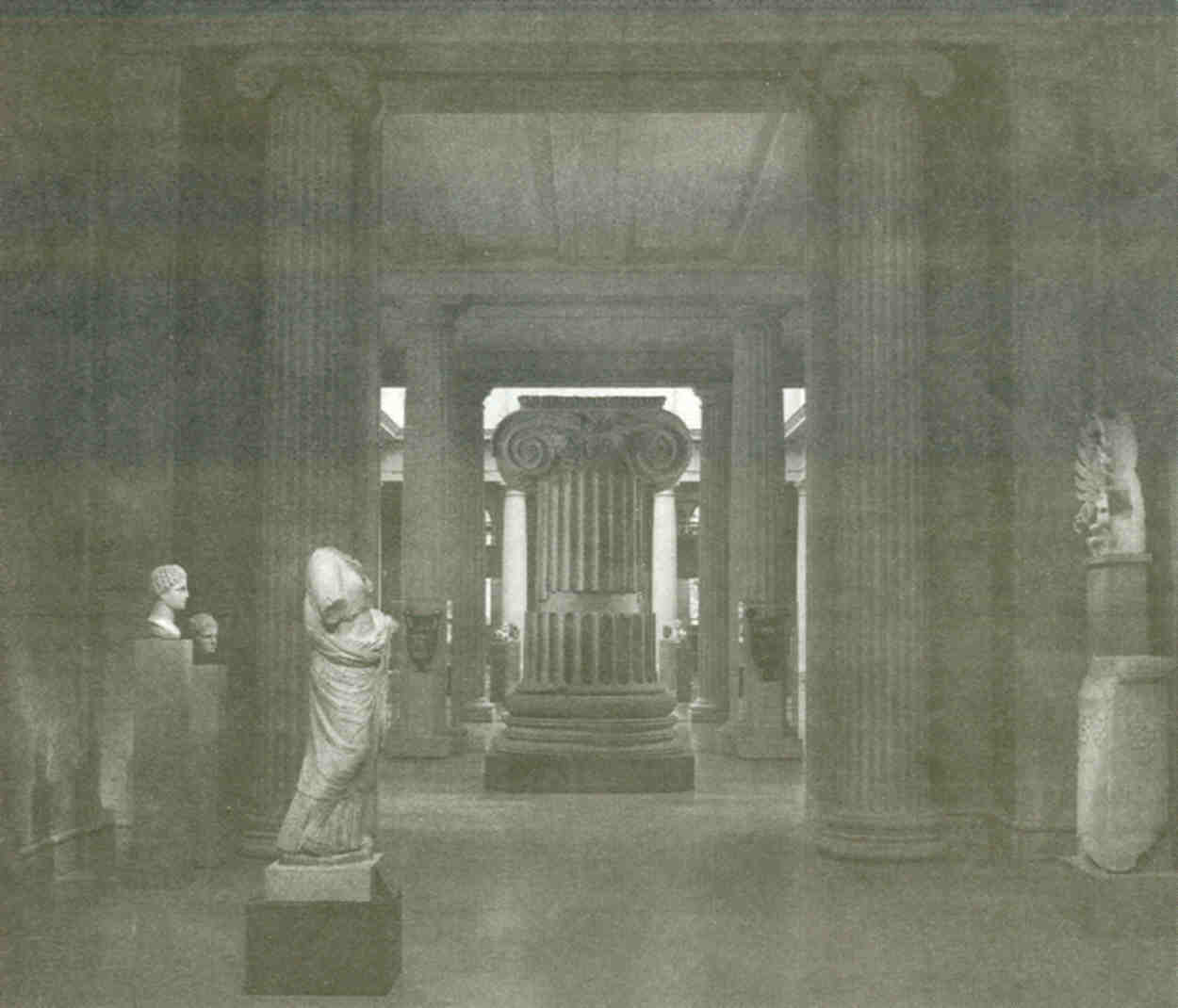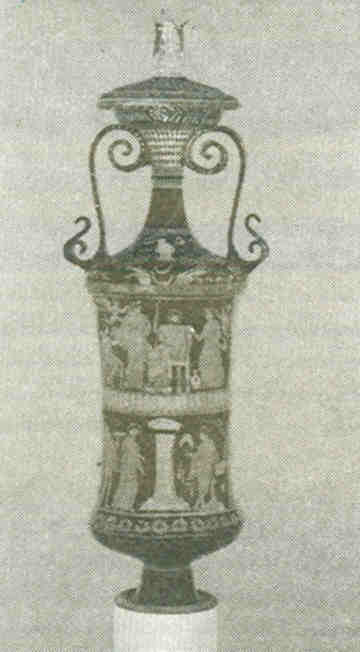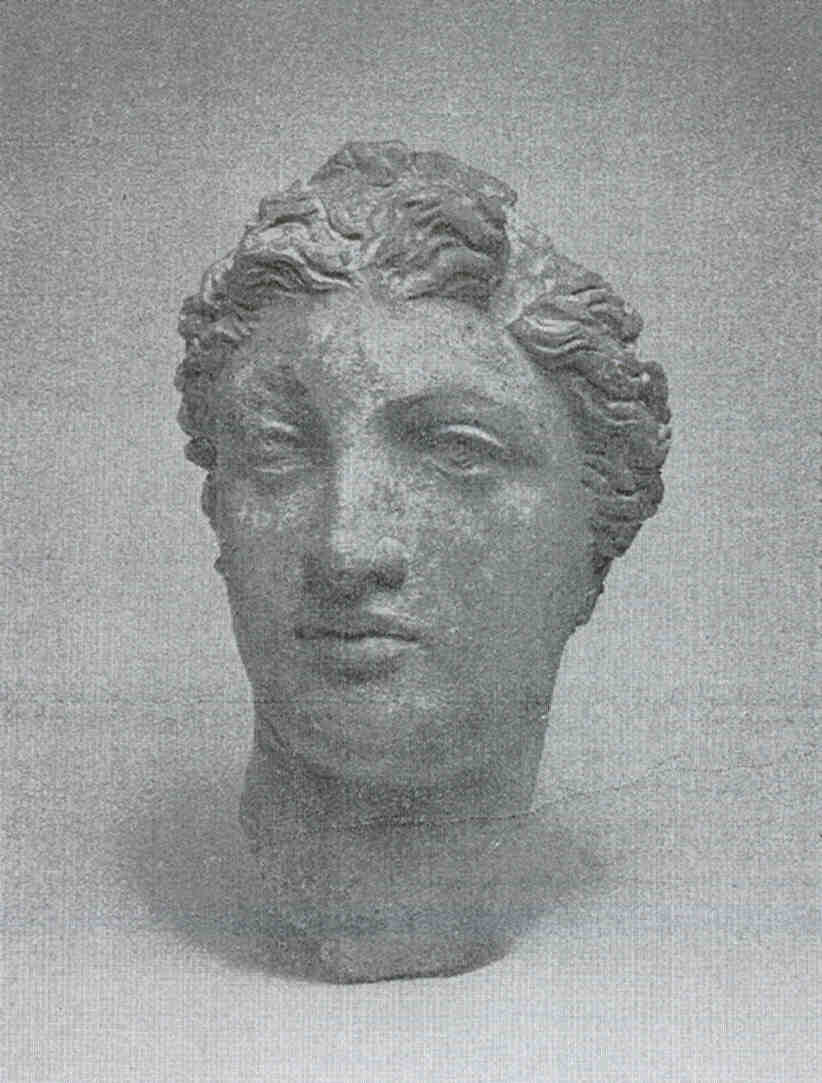 |
|
|
Metropolitan Museum to Unveil New Greek and Roman Galleries The Greek Star |
|
| NEW YORK-A spectacular "museum-within-the-museum" for the display of its extraordinary collection of Hellenistic, Etruscan, South Italian, and Roman art -much of it unseen in New York for generations-will open at The Metropolitan Museum of Art this April in its New Greek and Romon Galleries. After more than five years of construction, the long-awaited opening will conclude a 15-year project for the complete redesign and reinsilllation of the Museum's superb collection of classical art. Returning to public view in the new space are thousands of long-stored works from tile Metropolitan's collection, which is considered one of the finest in the world. The centerpiece of the New Greek and Roman Galleries is the majestic Leon Levy and Shelby White Court--a monumental, peristyle court for the display of Hellenistic and Roman art, with a soaring twostory atrium. |
 Column from the Temple of Artemis at Sardis. Greek, Hellenistic, ca. 300 B.C. Marble, h. 142-1/8in (361 cm). The Metropolitan Museum of Art, Gift of The American Society for the Excavation of Sardis |
"The New Greek and Roman Galleries are a milestone in an unprecedented building campaign-more than a dozen years in the making--to construct anew within the framework of our historic building, to make use of new methodologies while honoring the old, and to encourage our visitors to look at ancient art in a new way," commented Philippe de Montebello, Director of the Metropolitan Museum. "Some 6,000 works previously in storage, many of them collected in the earliest years after the Museum's founding in 1870, will now be installed on two levels of commodious new galleries by our brilliant team of curators under the leadership of Carlos Picon, Curator in Charge of the Department of Greek and Roman Art, and with the outstanding organizational abilities of Collections Coordinator Bill Gagen. As we celebrate this landmark event, we remember with gratitude the generosity of our many friends, past and present, who have made this possible---among them Shelby White and her late husband Leon Levy, and our dear friends the late Bill Blass and the late Frank A. Cosgrove, Jr., whose generous gifts have made possible this glorious new exhibition space for Greek and Roman art." |
|
| Shelby White commented: "My late husband, Leon Levy believed that by studying past civilizations we would better understand ourselves. What better setting to do that than these magnificent new galleries. I am thrilled." "The fashion designer Bill Blass was a collector of truly discerning taste," noted Carlos Picon, "with a passionate interest in the 'classics' of many time periods - including antiquities. Although, he had been a loyal and active member of our departmental friends group for many years, the bequest of half of his estate to the Department of Greek and Roman Art was immensely gratifying and a complete surprise." |
 Loutrophoros (ceremonial vase for water) with male deity between Persephone and Aphrodite. Greek, South Italian, Apulian, Late Classical, red-figure, ca. 340-330 B.C. Attributed to the Darius Painter. Terracotta, h. 36-5/8 in. (93cm). The Metropolitan Museum of Art, Rogers Fund 1911 (11.210.3a.b) |
|
|
|
Two larger-than-life-size statues of
Hercules face one another from either side of the court (both Roman, Flavian, first century A.D.) A lion skin is draped over the left arm of the young, beardless Hercules. The older, bearded Hercules wears the lion skin across his shoulders, with the lion's head and mane forming a hood on his head. Both works were part of the Giustiniani Collection in Rome, first published in 1631.
The purple stone called porphyry (from the Greek word for purple) was especially prized for monuments and building projects in Imperial Rome. A decorative support for a basin (Roman, second century A.D.) owes its appeal as much to the vibrant color of the stone as to the bold, dear carving. |
 Head of a Women. Greek, South Italian, Tarentine, Hellenistic, 3rd- 2nd century B.C. Terracotta, h. 10-1/2 in. (26.7 cm). The Metroplolitan Museum of Art, Rogers Fund, 1923 (23.160.95) |
|
The stone was imported from quarries in the eastern deserts of Upper Egypt. The support formed part of the collection of William Waldorf Astor, later Baron Astor of Hever, who assembled his collection of antiquities between 1890 and 1905. The dissemination of imperial portraits in sculpture, gems, and coins was the chief means of political propaganda in the Roman empire. Although the marble portrait head of the Emperor Augustus (Roman, ca. A.D. 14-37) incorporates individualized features, the overall effect is one of elevated dignity that recalls Greek statues of the fifth century B.C. The fine marble bust of Caligula (Roman, A.D. 37-42) adheres to the basic imperial image established by Augustus, to which the artist has added a proud turn of the head that conveys something of Caligula's personality. Additionally, there will be thematic displays of Hellenistic art, Hellenistic funerary art, Roman funerary art, sarcophagi, and Roman architecture. |
|
|
(Posting date 26 March 2007) HCS encourages readers to view other articles and releases in our permanent, extensive archives at the URL http://www.helleniccomserve.com/contents.html. |
|
|
|
|
2000 © Hellenic Communication Service, L.L.C. All Rights Reserved.
http://www.HellenicComServe.com |
|
